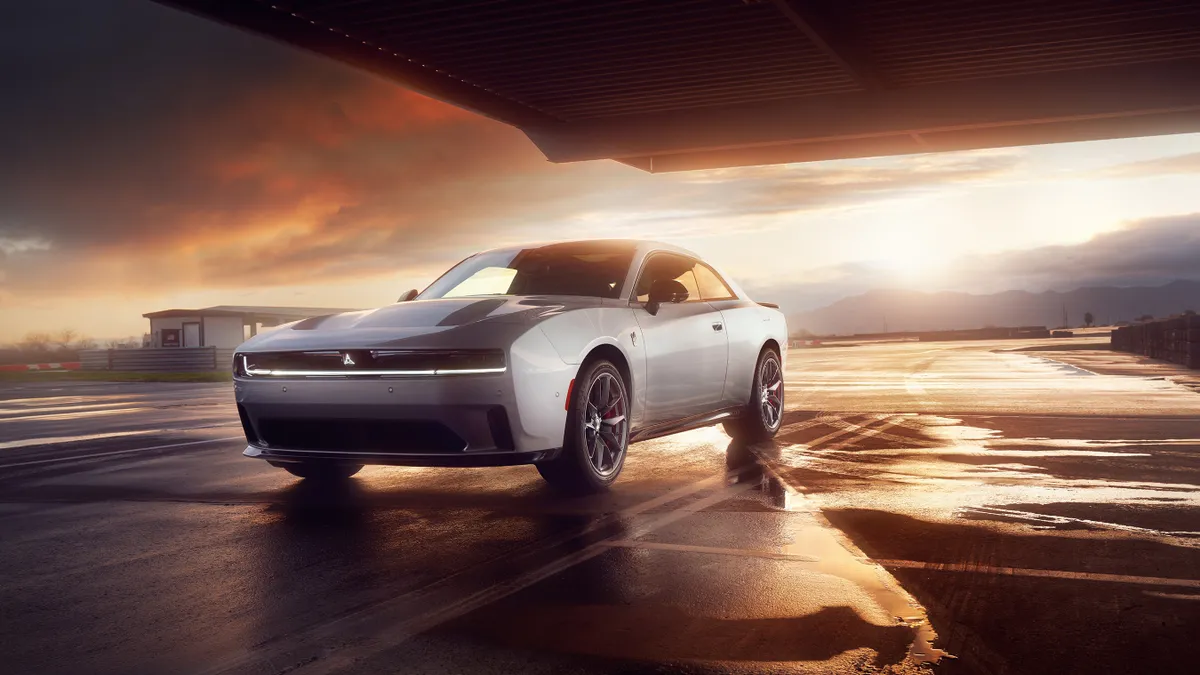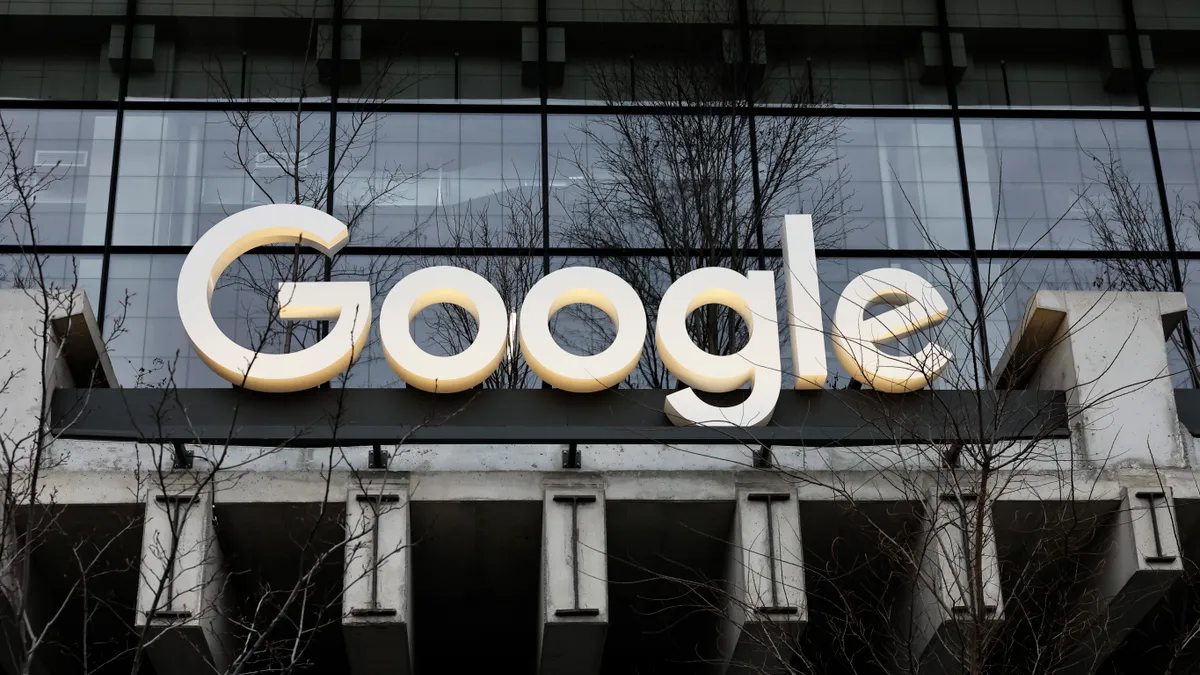Dive Brief:
- Dodge is trumpeting the arrival of its first all-electric vehicle, the Dodge Charger Daytona, with a campaign that flips the script on EV pitches around protecting the environment, according to a press release.
- The ads start on a somber note, with a narrator stating that Dodge is investing in EVs, not to be trendy, but to save the planet. The tone suddenly turns aggressive as the narrator adds that what the brand is really saving people from is the “lame, soulless, weak-looking, self-driving sleep pods” sold by rivals.
- “Save the Planet” creative is running as a 30-second broadcast TV spot, with shorter cutdowns airing on social media and a longer version available on YouTube. Dodge joins other automakers in adopting a bolder approach to marketing EVs as U.S. adoption lags.
Dive Insight:
Dodge is attempting to subvert expectations around what EV advertising looks like with “Save the Planet.” The pitch appears targeted at winning over traditional muscle-car fans who may not be convinced EVs can deliver the same kick. As the press release puts it, “Electric vehicles aren’t changing what Dodge stands for one tiny bit.”
New spots begin with seemingly earnest pleas around protecting the environment, accompanied by shots of city skylines and rolling ocean waves, before shifting into engine-revving mode as the Charger Daytona whips around the corner and the narrator takes not-so-subtle pot shots at competitors like Tesla, decrying “self-driving sleep pods” polluting the streets. Ads close on the copy, “The world’s most powerful muscle car.”
“‘Save the Planet’ speaks to the power of Dodge in a way that only Dodge can,” said Raj Register, chief marketing officer at Dodge parent Stellantis North America, in a press statement. “With a tinge, or perhaps more of a blast, of irony, Dodge stamps its flag in the pavement with the launch of the electrified Charger Daytona, asserting the American muscle-car icon's rightful and long-standing claim as the world's quickest and most powerful muscle car.”
Dodge plans to build on the campaign with social content highlighting vehicle features like a Fratzonic Chambered Exhaust, Sport Mode and Powershot. The Fratzonic Chambered Exhaust, a patent-pending innovation billed as an industry first, preserves the loud rumble of the Charger, contrasting with EVs that typically run much quieter than internal combustion engine vehicles. In addition, the automaker is selling a line of merchandise, including a hoodie and water bottle, bearing the “Believe in a Higher Horsepower | Save the Planet” motto on its website.
The two-door Charger Daytona arrives at dealerships in two models, the Dodge Charger Daytona R/T and the more premium Charger Daytona Scat Pack, its flagship offering. Dodge plans to release four-door models as part of its multi-energy lineup next year.
Dodge is hitting the gas on EV marketing as adoption for the category has slowed and its parent company falls under sharper pressures. Stellantis CEO Carlos Tavares resigned on Sunday amid plunging sales and divergent views with the company’s board on forging a path forward.
Dodge sticking to muscle-car roots contrasts with how other auto brands have handled the shift into promoting EVs. Jaguar, which is in the process of going all-electric, in November unveiled a new brand identity that switches out a focus on classic British luxury for a more colorful, diverse and futuristic look. The pivot has proved controversial, with critics arguing it positions Jaguar too far afield from its core appeal.















